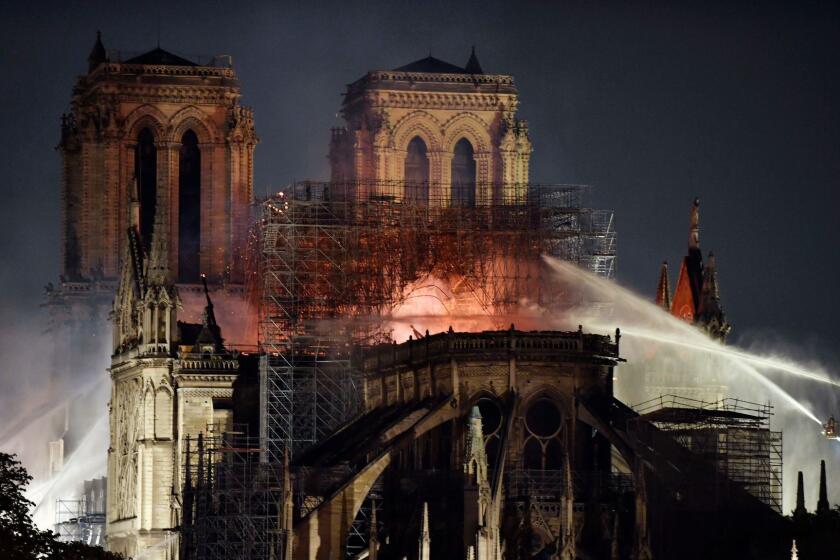Church volunteer admits to arson attack on 15th century French cathedral

- Share via
PARIS — French authorities have detained and charged a repentant church volunteer who told investigators he was responsible for an arson attack that badly damaged the 15th century Gothic cathedral in the western French city of Nantes.
The man had previously been questioned and then released after the July 18 blaze that destroyed the organ, shattered stained-glass windows and blackened the insides of the Cathedral of St. Peter and St. Paul.
Detained again this weekend for further questioning, the volunteer church worker admitted responsibility for the fire, said his lawyer, Quentin Chabert.
“He confessed to the allegations against him which, as the prosecutor indicated, are [of] causing destruction and damage by fire,” the lawyer told France Info radio Sunday. “He regrets the facts. That is certain. He is in a sort of repentance.”
French media quoted the Nantes prosecutor as saying that the 39-year-old Rwandan, who had been tasked with locking up the cathedral, told the investigating magistrate that he lit three fires: on two cathedral organs and an electrical box. His motives were unknown.
The prosecutor said the arson charge is punishable by a 10-year jail term and a fine of $175,000.
After the Notre Dame fire in April spewed tons of toxic lead dust into the atmosphere, Paris authorities couldn’t figure out how dangerous that was.
Picked up immediately after the fire, held for more than a day and then released, the man was detained again Saturday morning on the basis of evidence gathered by police forensic experts and a 20-member team of investigators who questioned more than 30 people, the prosecutor said in a statement.
The fire broke the main stained-glass windows between the cathedral’s two towers and destroyed its main organ. Dating from the 17th century, the organ was called the “soul of the cathedral” by faithful.
The cathedral was built over five centuries and completed in 1891. The organ had previously survived a serious fire in 1972, which destroyed many of its wooden structures.
More to Read
Sign up for Essential California
The most important California stories and recommendations in your inbox every morning.
You may occasionally receive promotional content from the Los Angeles Times.











